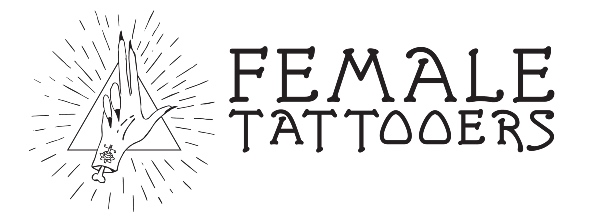Tattoo Healing Stages: Artists Explain What to Expect
We hate to break it to you, but the process of tattoo healing is actually worse than sitting and getting a tattoo. Not only will your body be sore, it will also be oozing fluids. And then the itching begins.
Look—even though tattoo healing isn’t exactly fun, it is a hugely important part of getting tattooed. If you don’t follow your artist’s instructions for healing a tattoo, you could mess up the look of your new artwork, or worse, compromise your health.
To help you understand what’s normal and not normal, we asked tattoo artists to share what you should expect during the tattoo healing process in a day-by-day breakdown.
Tattoo Healing: Understanding Different Methods
Everyone heals differently when it comes to getting tattooed, but most tattoos are considered healed within a few weeks of getting them done.
“A tattoo can heal around 2-4 weeks,” says Lauren Caldwell, a tattoo artist who works at The Inkuisition in Egg Harbor Township, New Jersey. “Some people heal faster than others. It’s aftercare and maintenance that makes the difference in this.”
There are also different methods for healing tattoos. Some artists recommend the standard method of carefully cleaning your tattoo 2-3 times per day with unscented soap, patting dry, and covering it with a thin layer of aftercare.
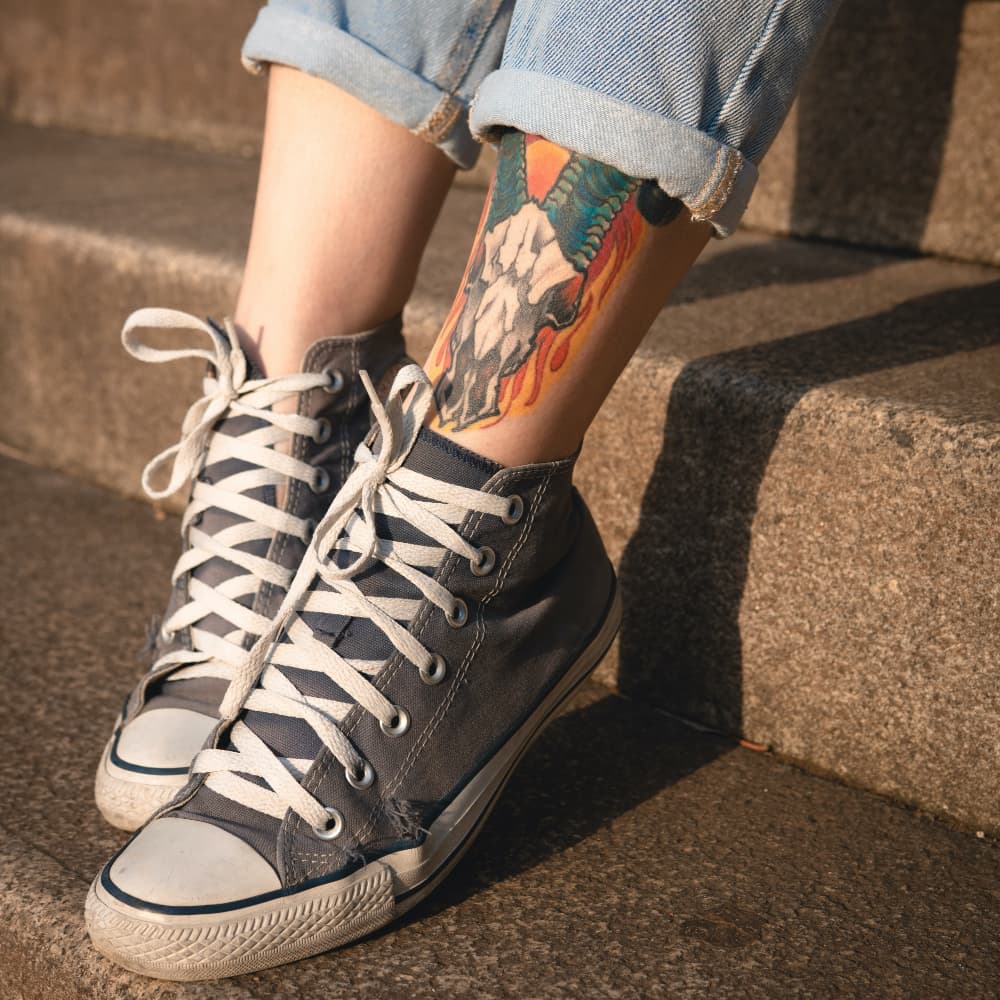
Other tattoo artists wrap their clients with a flexible, adhesive bandage (such as Saniderm or Tegaderm) that generally stays on for 4-7 days and removes the step of daily cleaning.
Regardless of the tattoo healing method, you should always follow your tattoo artist’s instructions and contact your artist directly if you have any questions or concerns.
Tattoo Healing Stages: General Timelines
To help you understand how the healing process works, we’ve broken down what you should expect during the first couple of weeks when using the regular, non-wrapped method and for healing tattoos with Saniderm or Tegaderm.
Traditional Tattoo Healing Method
Directly Following Your Tattoo Appointment
The tattoo healing process starts as soon as you walk out of the tattoo studio. Your tattoo artist should cover your tattoo with some type of wrap (cling wrap, medical pads, etc.) to protect it on your way home.
“This usually stays on for approximately 2 hours,” says Caldwell. “It will trap any of the blood and plasma (clear fluid) that leaks out immediately after being tattooed. This bandage also protects your new tattoo from the outside elements and keeps the blood from clotting to form a scab.”
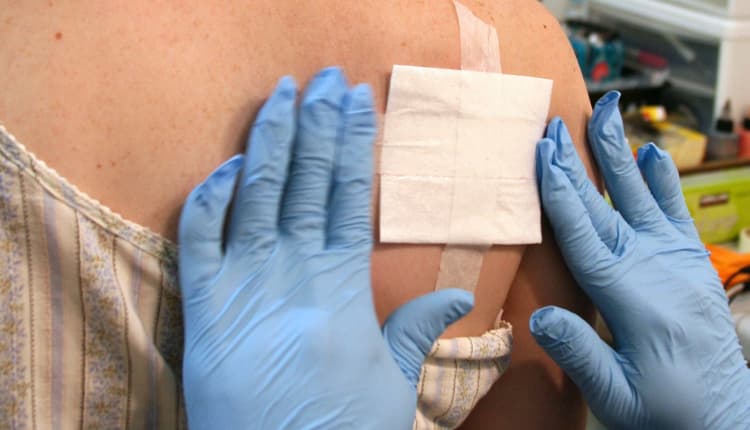
After removing the covering placed on your tattoo by your artist, you should carefully wash the tattoo with warm, soapy water using an unscented, antibacterial soap. Do not use any type of washcloth or loofah—simply clean it with your hands to remove any plasma and ink from your skin.
“You want to make sure you always pat dry with clean paper towels and then apply a thin layer of ointment,” says Caldwell.
Try to wear loose-fitting clothing to bed, since your tattoo will likely continue to leak overnight.
Days 1-3: Oozing and Sore
During the first few days, your tattoo is still an open wound and will be sore, painful, and warm to the touch. The skin around your tattoo might also appear slightly red and swollen.
During the first days of tattoo healing your tattoo will continue to release plasma, blood, and ink—this is completely normal. Plasma, which is a clear liquid, makes up the largest part of your blood (55 percent) and it’s release is part of your skin’s natural healing process.
It’s important to keep your tattoo as clean as possible during this time. Follow the same cleaning instructions (wash with soapy water, pat dry, apply a thin layer of ointment) as the night before. “Wash your new tattoo at least two times a day—when you wake up and before bed,” says Caldwell. If the tattoo is really leaky, you can add one more wash to the rotation to remove excess goop.
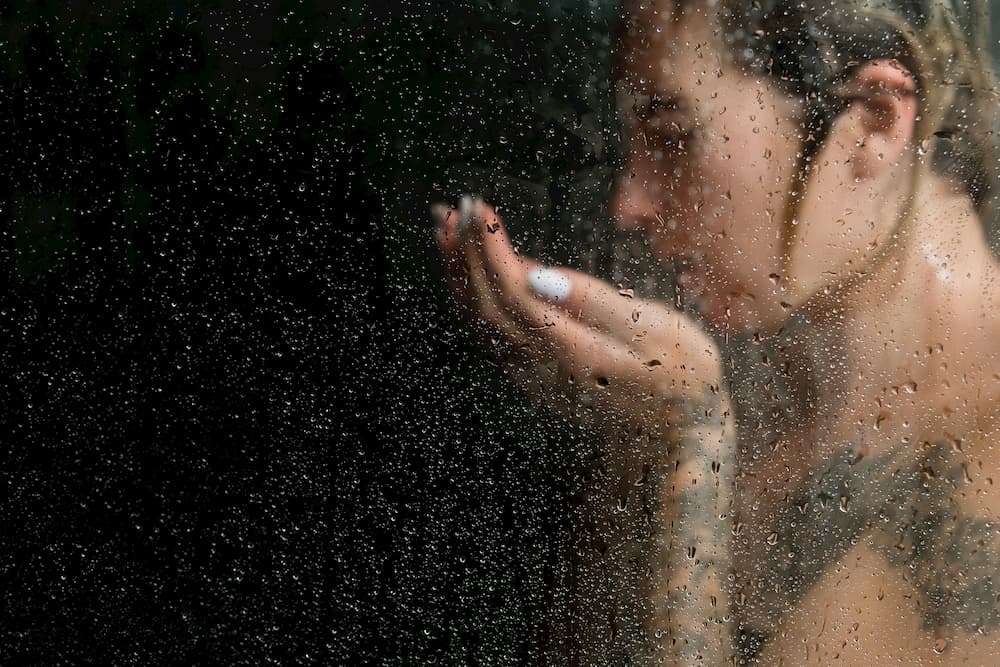
Apply a thin layer of moisturizer or aftercare ointment after your tattoo is fully dry to help minimize scabbing. “The moisturizer/ointment is crucial to keeping your tattoo from forming a scab,” says Caldwell. “The softening of the skin prevents this.”
Follow your artist’s aftercare instructions carefully. All tattoo artists recommend different aftercare products and have their own tattoo healing methods. Trust and listen to your artist.
Days 3-7: Dry, Tight, and Starting to Flake
After the third or fourth day following your tattoo appointment, your tattoo will begin to dry out. It may feel tight. Swelling should start to subside, though your skin might still feel warm and uncomfortable.
By the end of the first week, you will likely see your tattoo flaking. This is also a normal part of the tattoo healing process.
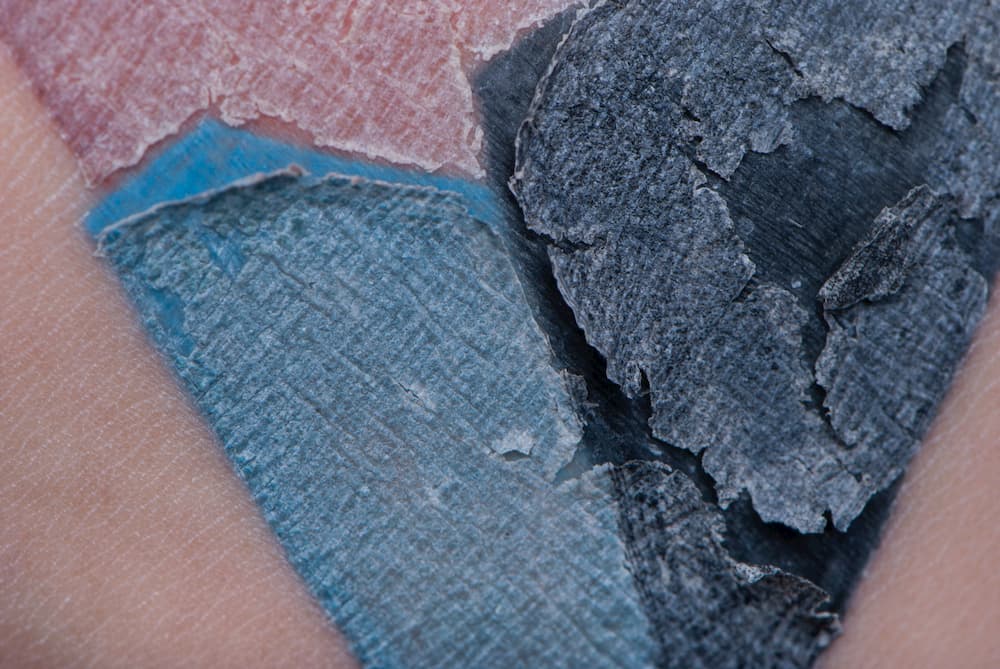
“Flaking is simply your body shedding its outermost layer of skin,” says Erin Belley, an artist who works at the Parkdale location of Boss Tattoos Collective in Calgary, Alberta. “But this time, the skin had been damaged and filled with ink, so it comes off in larger flakes and full of color.”
If you see your tattoo flaking, don’t be alarmed. This is not a sign that ink is being removed from the skin. Just make sure you let your tattoo flake naturally. “As long as you’re not picking at it, scrubbing it, or peeling the flaky skin off, you should be fine,” adds Caldwell.
Days 7-14: More Flaking, Scabbing, and Itching
During the second week of tattoo healing, your tattoo will continue to flake, and you may start to see scabs forming over some areas of the tattoo. While trying to prevent scabbing is recommended, tattoo scabbing is not uncommon.
“I would consider scabbing normal, but not ideal in tattoo healing,” says Belley. “Scabbing is what happens when the plasma is not efficiently cleaned off of the tattoo after your body is finished producing it (usually between 24-48 hours) and it evaporates and dries.”
Caldwell explains that scabbing may also happen if you apply too much moisturizer or ointment to your tattoo or if a particular part your skin was overworked during your session.
Do not pick at the scabs on your tattoo. Continue to wash and lightly moisturize your tattoo as instructed by your artist.
During this time, you may also experience the dreaded tattoo itch. Some may experience a mild itch, while others will experience an intense itch. Your skin will be dry and flakey as it heals, so some level of itchiness is to be expected. Some clients may also have a slight allergic reaction to some inks, which may cause an itchy feeling.
Although it may take every ounce of willpower, do not scratch your new tattoo. Not only could this affect how it looks, but you can also cause infection or irritation. Eventually, the itch should subside.
Days 15-30: Slightly Dry and Dull
Most tattoos will finish flaking and essentially be healed around the 2-week mark. But it still may take a couple of weeks for your tattoo to fully settle in.
During this time, your tattoo may look a little dull or faded. This is normal and once the tattoo is fully healed and settled in, its brightness will return. You may also feel slightly raised portions of your tattoo during this stage, but this should eventually disappear.
“The smaller tattoos usually heal the fastest, because of there being minimal trauma to the area. Larger scale and color tattoos can take longer,” says Caldwell. “My baseline is that if it no longer has a shine or waxy look to it, you can bet it’s healed.”
Saniderm or Tegaderm Tattoo Healing Method
Instead of following the traditional tattoo healing method listed above, your tattoo artist may place a breathable, adhesive bandage (such as Saniderm, Tegaderm, SecondSkin, etc.) on your tattoo directly following your appointment. This removes the need to clean and wash your tattoo repeatedly during the first week.
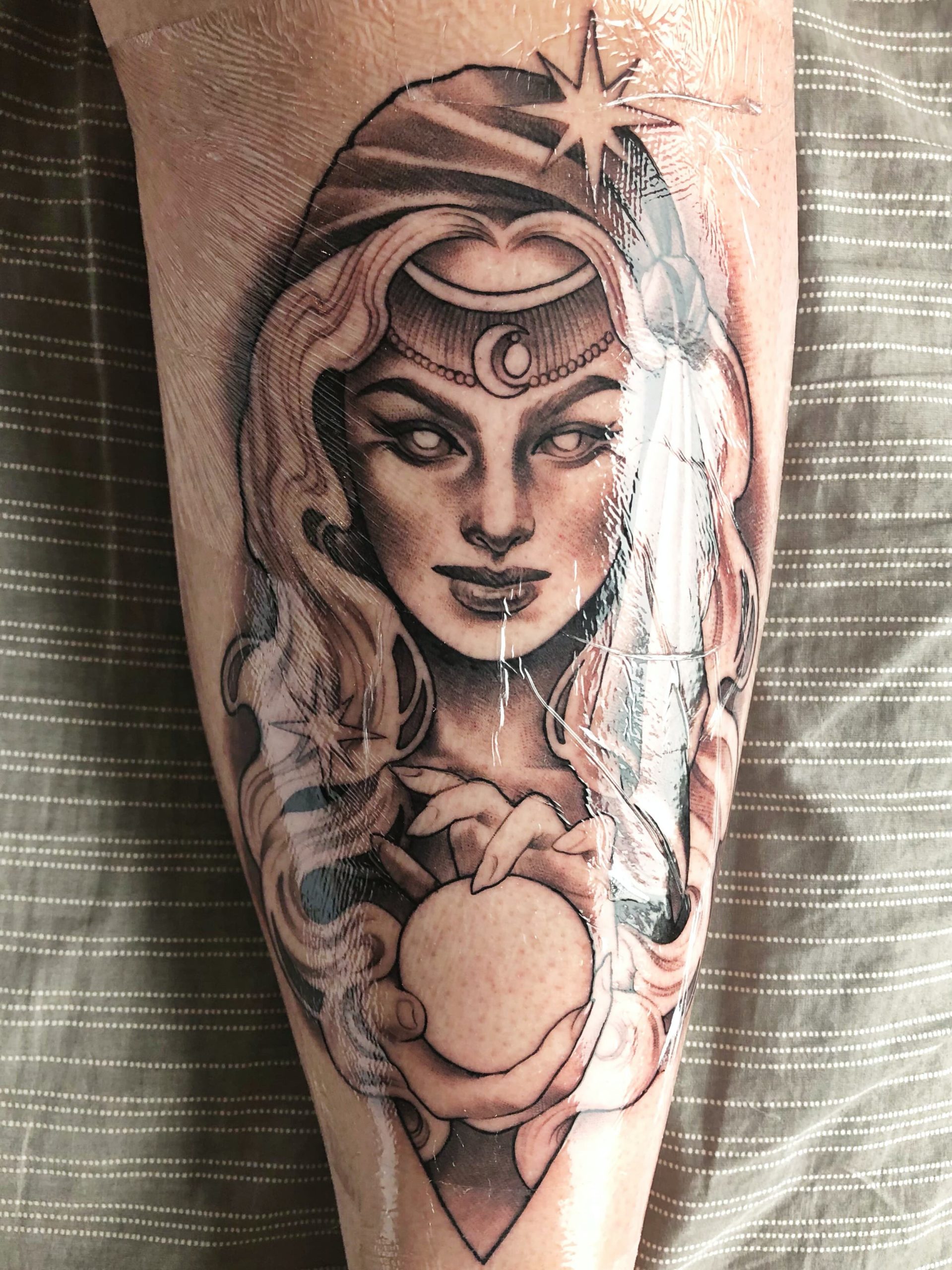
“It dramatically reduces the risk of the tattoo becoming infected and protects the new skin during the initial healing stages,” says Belley.
If your artist recommends using an adhesive wrap to heal your tattoo, the following timeline is generally what you can expect.
Directly Following Your Tattoo Appointment
Your artist will clean and wrap your new tattoo and make sure the adhesive bandage covers the entirety of the tattoo. They will press it tightly against your skin and remove any backing that may be on the bandage.
You’ll be left with a clear, protective covering over your tattoo—and you’re good to go.
Days 1-3: A Liquid-Filled Bandage
All of the plasma, blood, and ink will leak directly into your bandage and pool up in certain areas. It will look dark and inky. Although it looks gross, and may be alarming to someone unfamiliar with this healing method, this is totally normal.
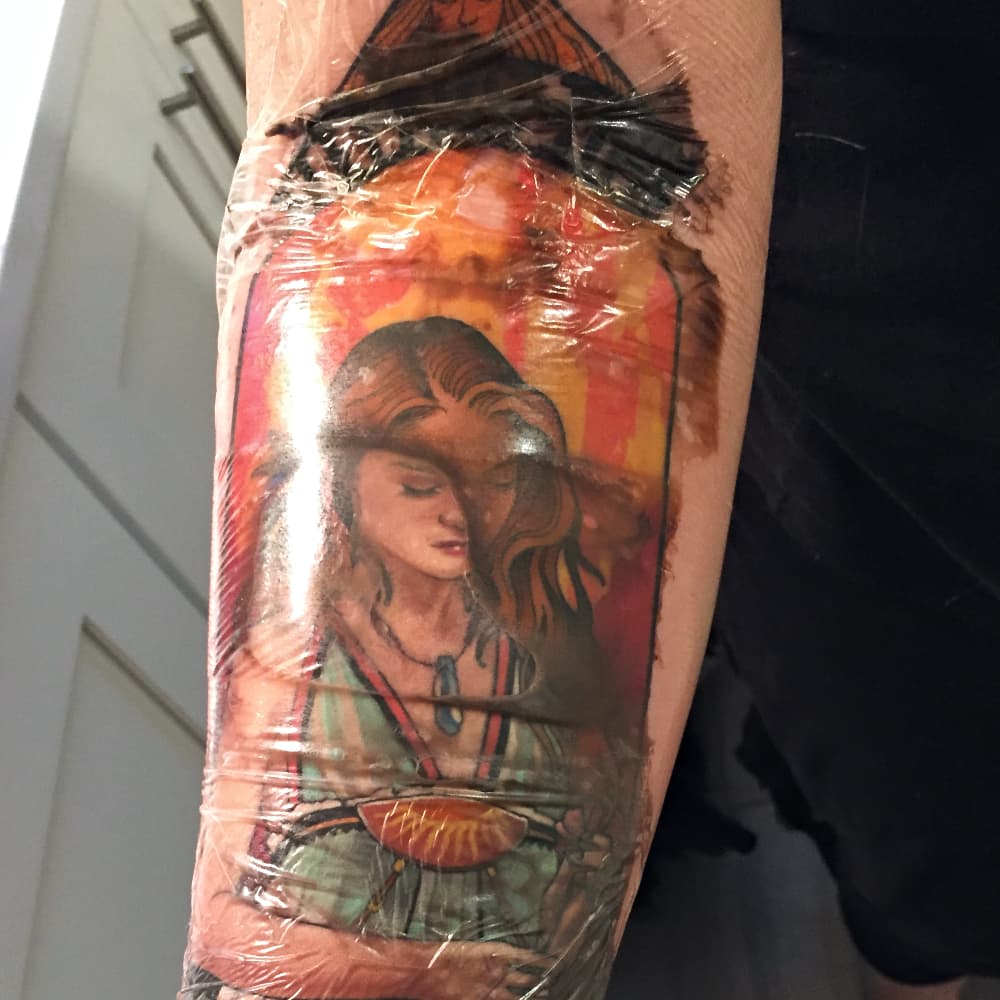
Belley says that she recommends clients leave the first bandage on for 24-48 hours. After that time, you can remove the bandage, wash the tattoo thoroughly using warm water and unscented soap, and pat it dry.
Once the tattoo is completely dry, you can place a new adhesive bandage over the tattoo. “This wrap stays on for the majority of the healing time, about 6-7 days,” says Belley.
Days 4-5: Leave It Alone
Make sure to follow all instructions from your tattoo artist. Some artists, like Belley, recommend swapping the initial tattoo healing wrap for a new one within the first day or two.
Other artists, however, will place one piece of Saniderm or Tegaderm on the tattoo following your appointment and tell you to leave it on for 5-7 days. Just listen to your artist’s specific recommendations.
Changing out your bandage on your own at home could be difficult for certain body parts, or you could run the risk of contaminating the area if you’re not careful. If you live close to your artist’s tattoo studio, your artist may be able to change the bandage for you in a sterile environment.
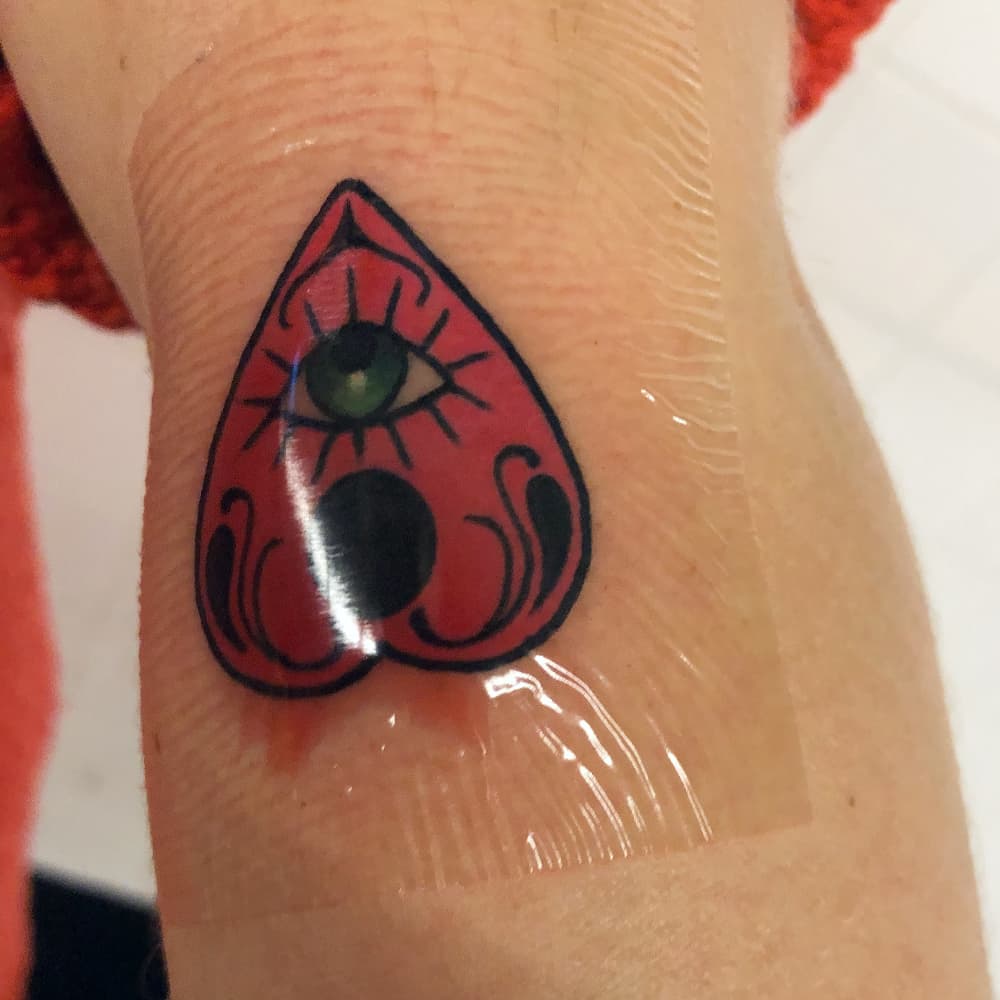
Regardless of whether you stick to the first wrap or swap it for a different one, it’s important to leave the bandage alone during this tattoo healing stage. Don’t peel it, pick at it, or touch it. Simply, let it be. During this time, you can shower normally, but try to avoid getting the bandage very wet and do not submerge the bandage in water.
Any fluid and plasma will dry up in the bandage during this phase and the wrap may feel tight on your skin.
Although the risk of infection with this type of bandage is minimal, it’s important to watch for any warning signs or problems. “With the wrap on, it’s very easy to see if there is an irritation or infection and I warn clients to watch for areas that are sore and not improving, or that have a milky grey substance surrounding the area,” says Belley. “If this happens, I recommend immediately removing the wrap and washing thoroughly with unscented soap.”
Additionally, if any areas of your bandage lift up, leak excessively, or expose your tattoo, remove the bandage and heal your tattoo normally to avoid the risk of bacteria getting under the bandage and harming the tattoo.
Days 6-7: Remove the Saniderm or Tegaderm Bandage
Tattoo artists will generally recommend removing the tattoo healing wrap around days 6-7. Removing the bandage in the shower will help it come off your skin easier. Once the bandage is removed, you should clean your tattoo thoroughly with warm water and unscented antibacterial soap.
Pat your tattoo dry with paper towels and add a thin layer of unscented moisturizer. Your tattoo should look vibrant and there should be virtually no flaking or itching.
Days 7+: Moisturize and Enjoy Your Tattoo
Using a breathable, medical grade bandage like Saniderm or Tegaderm cuts tattoo healing time down considerably and protects your tattoo from contamination and infection.
After the removal of the bandage, your tattoo may still feel dry for another week or two, so moisturize it as needed with unscented lotion.
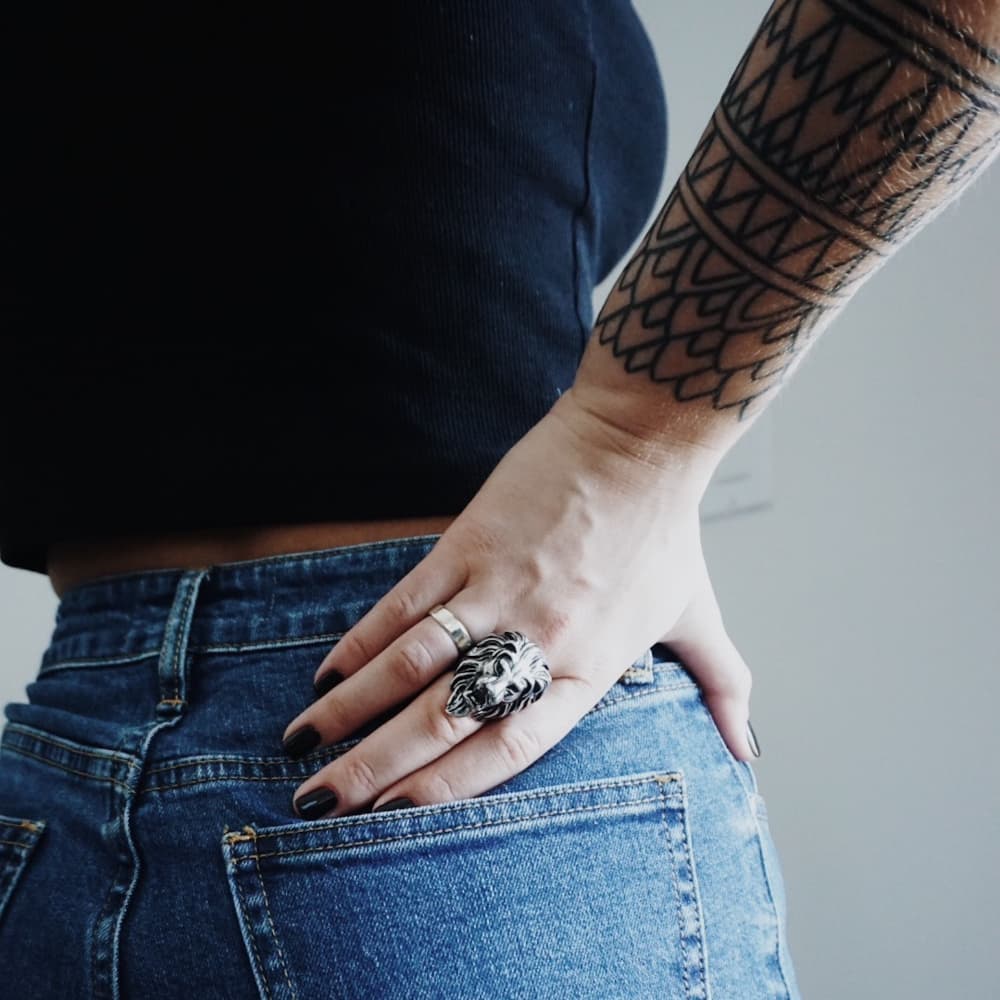
Even if your tattoo appears healed, you should still avoid swimming or sun exposure until it is fully settled into your skin—which could still take a few weeks following the removal of the bandage.
What Not to Do While Healing a Tattoo
During the healing stages of a tattoo, it’s important that you take precautions and avoid certain activities and behaviors to prevent infection and poor healing.
Here are some things you should not do while your tattoo is healing:
Don’t expose your tattoo to the sun
Keep your tattoo covered with long sleeves or pants if you need to be outside in the sun during the healing process. Do not put sunscreen on a healing tattoo. Just cover it to avoid sun exposure.
Don’t swim with a new tattoo
Swimming with a new tattoo can cause serious infections. “Do not go swimming or submerge your tattoo in water,” says Caldwell. “This means pools, lakes, oceans, etc. The chlorine and bacteria that could get into your fresh tattoo can cause numerous health issues.”

Don’t go to the gym
Gyms are full of bacteria and germs, so stay away while your tattoo is healing. Avoid strenuous workouts and give your skin time to recover. Sweat can cause your tattoo to push out more ink or moisture can lead to infection. Take it easy for 3-4 weeks following your tattoo.
Don’t use scented moisturisers
Avoid using heavily scented lotion on your tattoo while it is healing. “Bath & Body Works may smell nice, but it can ruin your new tattoo that you spent a lot of money on,” says Caldwell. “The scented route can also cause irritation and some of the color to pull or fade.”
Signs of Tattoo Healing Problems
If you follow your artist’s recommendations for tattoo aftercare and keep your tattoo clean, you shouldn’t experience any adverse reactions and your tattoo should heal nicely. But it’s important to watch for any signs of infection in your new tattoo.
Signs of a potential tattoo infection include:
- Red, bumpy rash surrounding your tattoo
- Visible pus coming from the tattoo
- Swelling that won’t subside
- Very warm and inflamed area
- Fever
- Chills
If you experience any of these symptoms, and they do not disappear after a few days, call your doctor to get the tattoo checked. If you start to develop a high fever, muscle aches, vomiting, or diarrhea, see a doctor immediately as these signs can signify a more serious health problem.
“If a client is worried, they should definitely see a doctor immediately,” says Caldwell. “Not all infections come from the tattoo process itself, but can come from poor aftercare procedures as well.”
This article is meant as a guideline only and should not replace the advice from your tattoo artist or from a doctor. If you have any questions about healing your new tattoo, discuss them with your artist.
